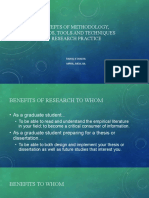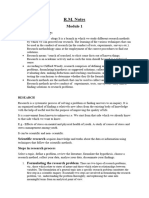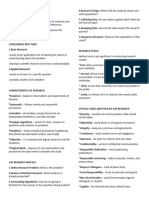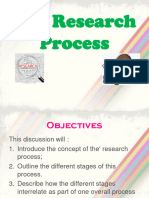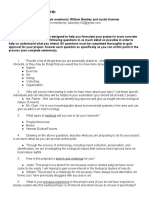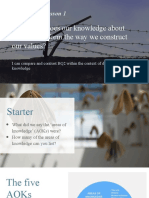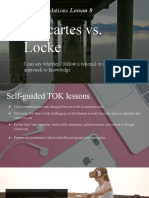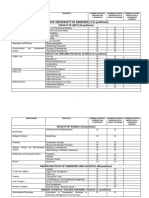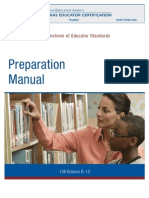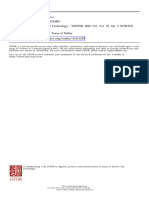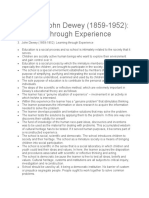0% found this document useful (0 votes)
35 views88 pagesResearchMethods Lectures
The document discusses the research process and its key stages. It begins by introducing the concept of the research process and outlining its main stages: 1) problem/objectives identification, 2) theoretical/conceptual framework development, 3) hypothesis formulation, 4) research design, 5) data collection, 6) data analysis, 7) interpretation and discussion, and 8) conclusions. It then provides more details on two important stages - literature review and problem identification. The literature review aims to critically evaluate existing research, while problem identification establishes the research topic and question.
Uploaded by
REYES, JAN MERCK M.Copyright
© © All Rights Reserved
We take content rights seriously. If you suspect this is your content, claim it here.
Available Formats
Download as PDF, TXT or read online on Scribd
0% found this document useful (0 votes)
35 views88 pagesResearchMethods Lectures
The document discusses the research process and its key stages. It begins by introducing the concept of the research process and outlining its main stages: 1) problem/objectives identification, 2) theoretical/conceptual framework development, 3) hypothesis formulation, 4) research design, 5) data collection, 6) data analysis, 7) interpretation and discussion, and 8) conclusions. It then provides more details on two important stages - literature review and problem identification. The literature review aims to critically evaluate existing research, while problem identification establishes the research topic and question.
Uploaded by
REYES, JAN MERCK M.Copyright
© © All Rights Reserved
We take content rights seriously. If you suspect this is your content, claim it here.
Available Formats
Download as PDF, TXT or read online on Scribd
/ 88


























